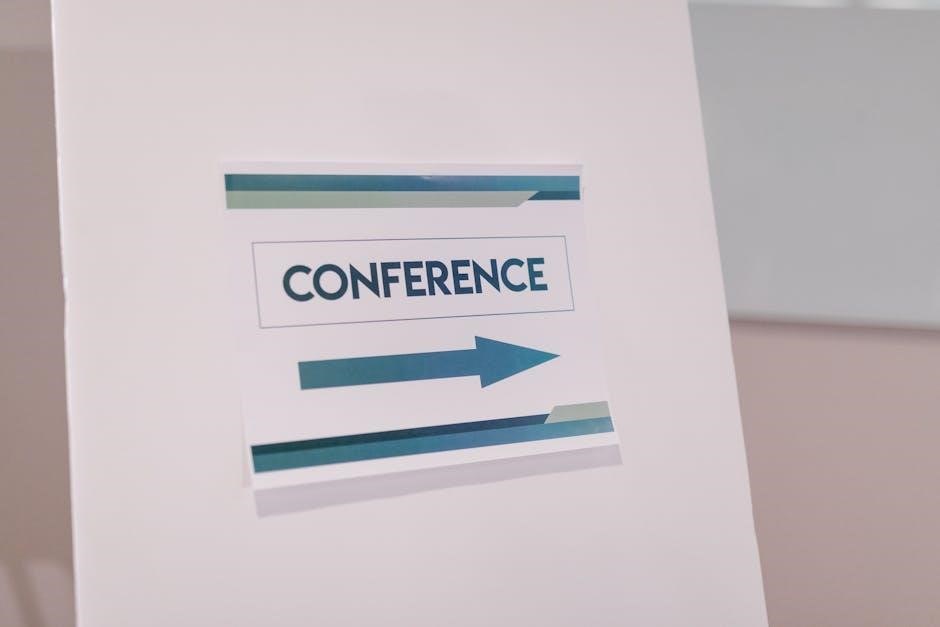The LinguiSystems Guide to Communication Milestones is a valuable resource, offering a comprehensive overview of speech and language development. It provides insights into typical communication behaviors, supporting professionals and parents in understanding the expected progression of skills.

Overview of Communication Development Areas
This guide encompasses various communication development areas, including feeding milestones, speech sound acquisition, and phoneme development. It also addresses phonological patterns, pragmatics, literacy, vocabulary growth, and question formation. Monitoring these areas helps identify typical progress and potential areas needing support, according to the LinguiSystems guide.

Feeding Milestones
Feeding milestones mark crucial developmental stages in infants and young children, impacting their ability to nourish themselves and develop oral motor skills essential for speech. Speech-language pathologists play a primary role in evaluating and treating feeding and swallowing difficulties.
These milestones begin with early reflexes like sucking and swallowing, gradually progressing to more complex skills such as coordinating sucking, swallowing, and breathing. Infants initially rely on breast milk or formula, transitioning to pureed foods around six months. As they develop, they learn to manage textures, chew, and self-feed with finger foods.
Observing these milestones helps identify potential issues like difficulty latching, swallowing problems (dysphagia), or food aversions. Delays or difficulties in feeding can impact nutrition, growth, and the development of speech sounds. The LinguiSystems Guide to Communication Milestones provides specific age ranges for these feeding skills.
Parents and professionals must monitor these milestones. Early intervention can address any feeding challenges, ensuring children receive adequate nutrition and develop necessary oral motor skills for future speech and language development. It’s crucial to remember that milestones offer general guidelines, and individual variations are common.
Speech Sound Acquisition Milestones
Speech sound acquisition milestones represent a child’s growing ability to produce speech sounds correctly, a fundamental aspect of communication development. These milestones follow a predictable pattern, with certain sounds typically emerging earlier than others. Understanding this progression is vital for identifying potential articulation delays or disorders.
Early speech sound development involves vowel sounds and some easier consonants like /m/, /b/, and /p/. As children mature, they gradually acquire more complex sounds, such as /t/, /d/, /k/, and /g/. Later, sounds like /s/, /z/, /l/, and /r/ emerge, often continuing into the early school years. Intelligibility, or how well others understand a child’s speech, also increases with age.
The LinguiSystems Guide to Communication Milestones outlines the typical ages for acquiring different speech sounds. It acknowledges that variations exist but provides a framework for monitoring progress. If a child consistently struggles with specific sounds beyond the expected age, it warrants further evaluation by a speech-language pathologist.

Factors influencing speech sound acquisition include oral motor skills, hearing ability, and exposure to language. Early intervention can help children overcome articulation challenges. Monitoring these milestones ensures that children develop clear and understandable speech, impacting their communication skills and academic success.
Phoneme Development Milestones
Phoneme development milestones track a child’s ability to perceive and produce individual phonemes, the smallest units of sound that distinguish one word from another. This development is crucial for clear and effective communication, impacting both spoken and written language skills. Understanding these milestones aids in identifying potential phonological delays.
The earliest stages of phoneme development involve distinguishing between different vowel sounds and producing simple consonant-vowel combinations. As children grow, they learn to differentiate and articulate a wider range of consonant sounds, including stops, fricatives, and affricates. This process involves refining their motor skills and auditory perception.
The LinguiSystems Guide to Communication Milestones provides a detailed timeline of phoneme acquisition, outlining the ages at which children typically master specific sounds. It acknowledges that individual variation exists but offers a valuable reference for monitoring progress. Difficulties in phoneme development can manifest as articulation errors, such as substitutions, omissions, or distortions of sounds.
Factors influencing phoneme development include hearing acuity, oral motor coordination, and exposure to a rich linguistic environment. Intervention from a speech-language pathologist may be necessary if a child demonstrates persistent difficulties in producing specific phonemes. Early identification and support can help children achieve age-appropriate phoneme production skills, leading to improved communication and literacy outcomes.
Phonological Patterns Milestones
Phonological patterns milestones focus on the systematic simplifications children use to make words easier to pronounce as their speech develops. These patterns, also known as phonological processes, are a normal part of language acquisition, but persistent use beyond a certain age can indicate a phonological disorder.
Common phonological patterns include cluster reduction (e.g., saying “poon” for “spoon”), final consonant deletion (e.g., saying “ca” for “cat”), and stopping (e.g., saying “tee” for “see”). These patterns reflect a child’s developing understanding of the sound system of their language and their ability to produce complex sound sequences.
The LinguiSystems Guide to Communication Milestones outlines the typical ages at which children should suppress various phonological patterns. For example, final consonant deletion is usually eliminated by age three, while cluster reduction may persist until age four or five. Monitoring these milestones helps identify children who may benefit from speech therapy.
Assessment of phonological patterns involves analyzing a child’s speech to identify the specific patterns they are using and the frequency with which they occur. Intervention focuses on increasing a child’s awareness of these patterns and teaching them to produce the correct sounds. Early intervention can prevent phonological disorders from impacting literacy development and academic success.
Understanding phonological patterns milestones is crucial for speech-language pathologists and educators in supporting children’s speech development. By tracking these milestones, professionals can provide targeted intervention to address any delays or disorders, ensuring children develop clear and effective communication skills.
Pragmatics Milestones
Pragmatics milestones encompass the social rules of communication, detailing how language is used in social contexts. These milestones focus on understanding and using language appropriately in different situations, including initiating conversations, taking turns, maintaining topics, and understanding nonverbal cues.
Early pragmatic skills involve responding to greetings, using eye contact, and engaging in simple turn-taking games. As children develop, they learn to adjust their language to suit different listeners and situations, such as speaking politely to adults or explaining things clearly to younger children.
The LinguiSystems Guide to Communication Milestones outlines typical pragmatic development, highlighting milestones such as understanding humor, using appropriate tone of voice, and resolving communication breakdowns. Children also learn to interpret nonverbal cues like facial expressions and body language, which are essential for effective social interaction.
Difficulties with pragmatics can manifest as challenges in understanding sarcasm, interpreting social cues, or maintaining conversations. These difficulties can impact social relationships, academic performance, and overall quality of life. Speech-language pathologists play a crucial role in assessing and addressing pragmatic deficits through targeted interventions.
Intervention strategies often involve teaching explicit social rules, practicing conversational skills, and providing opportunities for social interaction in structured settings. By monitoring pragmatics milestones, professionals can identify children who may need support and provide interventions to enhance their social communication skills. Effective pragmatics skills are essential for navigating social situations and fostering meaningful relationships.
Literacy Milestones
Literacy milestones refer to the developmental stages in reading and writing skills. The LinguiSystems Guide to Communication Milestones includes these, charting the typical progression from pre-literacy skills to more advanced reading comprehension and written expression. Early literacy skills begin with exposure to books and print, fostering an appreciation for reading.
Key milestones include recognizing letters, understanding that print carries meaning, and developing phonological awareness. Phonological awareness, the ability to recognize and manipulate the sounds in spoken language, is a critical predictor of reading success. Children also learn to associate letters with their corresponding sounds, a skill known as phonics.
As children progress, they begin to decode words, read simple sentences, and eventually comprehend more complex texts. Writing milestones involve learning to form letters, spell words, and construct sentences. The guide outlines stages such as emergent writing, where children may scribble or use invented spelling, to conventional writing, where they adhere to standard spelling and grammar rules.
Difficulties in literacy development can manifest as challenges in decoding, reading fluency, or reading comprehension. Early identification of literacy difficulties is crucial for providing targeted interventions. Speech-language pathologists often work collaboratively with educators to address literacy challenges, focusing on phonological awareness, phonics, and language comprehension skills.
Intervention strategies may include explicit instruction in phonics, guided reading activities, and strategies to improve reading comprehension. Monitoring literacy milestones helps identify children who may benefit from additional support, ensuring they develop the necessary skills for academic success and lifelong learning. A strong foundation in literacy is essential for effective communication and overall development.
Vocabulary Development Milestones
Vocabulary development milestones track the growth of a child’s lexicon, from first words to complex vocabulary usage. The LinguiSystems Guide to Communication Milestones provides a detailed overview of expected vocabulary acquisition at different ages. Early milestones include understanding and using single words, followed by the combination of words to form simple phrases.
Toddlers typically experience a vocabulary spurt, rapidly expanding their word knowledge. Preschoolers begin to learn new words through conversations, stories, and direct instruction. School-age children continue to expand their vocabulary through reading, academic instruction, and social interactions. The guide highlights the importance of exposure to rich language environments in fostering vocabulary growth.
Key milestones involve understanding and using different types of words, including nouns, verbs, adjectives, and adverbs. Children also learn to understand and use figurative language, such as metaphors and similes. Vocabulary development is closely linked to reading comprehension, as a larger vocabulary allows for better understanding of written texts.
Difficulties in vocabulary development can manifest as limited word knowledge, difficulty understanding spoken or written language, and challenges expressing oneself clearly. Early identification of vocabulary deficits is essential for providing targeted interventions. Speech-language pathologists play a crucial role in assessing and addressing vocabulary difficulties.
Intervention strategies may include explicit vocabulary instruction, contextual learning, and strategies to promote word retrieval. Monitoring vocabulary milestones helps identify children who may benefit from additional support, ensuring they develop the necessary vocabulary skills for academic success and effective communication. A robust vocabulary is foundational for literacy, language comprehension, and overall cognitive development.
Question Development Milestones
Question development milestones reflect a child’s increasing ability to seek information and engage in conversational exchanges. The LinguiSystems Guide to Communication Milestones outlines the typical progression of question-asking skills, from early requests to complex inquiries. Initially, children use simple questions, often employing rising intonation to indicate a question.
As language develops, children begin to use wh- questions (who, what, where, when, why, how) to gather specific information. The order in which these questions emerge often follows a predictable pattern, with “what” and “where” questions appearing earlier than “why” and “how” questions. Understanding and using these questions demonstrates a growing understanding of cause-and-effect relationships.
Preschoolers refine their question-asking skills, using more complex sentence structures and incorporating questions into their play and social interactions. They learn to ask clarifying questions to ensure understanding and to seek explanations for unfamiliar concepts. This stage marks significant cognitive and linguistic advancement.
School-age children continue to develop their question-asking abilities, formulating more abstract and hypothetical questions. They use questions to explore different perspectives, evaluate information, and engage in critical thinking. The ability to ask effective questions is crucial for academic success and problem-solving.
Difficulties in question development may indicate underlying language impairments or cognitive delays. Children who struggle to formulate or understand questions may experience challenges in social interactions, academic learning, and overall communication. Speech-language pathologists can assess and address these difficulties through targeted interventions.
Intervention strategies may focus on teaching question words, practicing question formation, and providing opportunities for children to engage in question-answer exchanges. Monitoring question development milestones helps identify children who may benefit from additional support, ensuring they develop the necessary skills for effective communication and lifelong learning.

Importance of Monitoring Milestones
Monitoring communication milestones, as outlined in the LinguiSystems Guide, plays a vital role in ensuring children develop age-appropriate communication skills. Early identification of potential delays allows for timely intervention, maximizing the child’s potential for successful communication development. Regular monitoring provides a framework for parents and professionals to track a child’s progress.
Tracking communication milestones helps identify children who may benefit from further evaluation by a speech-language pathologist or other qualified professional. Early intervention is crucial, as it can prevent or minimize the long-term impact of communication disorders on academic, social, and emotional development. Monitoring milestones also provides valuable information for educators.
The LinguiSystems Guide offers a structured approach to understanding typical communication development, enabling parents and caregivers to actively participate in their child’s language journey. By observing a child’s skills in various areas, such as speech sound acquisition, vocabulary development, and pragmatics, parents can identify areas where the child may need additional support.
Furthermore, monitoring milestones can empower parents to create a stimulating language-rich environment at home. By understanding the expected communication skills for each age range, parents can tailor their interactions and activities to promote language growth. Activities like reading aloud, engaging in conversations, and playing language-based games can significantly contribute to a child’s communication development.
Regular monitoring of communication milestones is not intended to cause anxiety or concern but rather to provide valuable information that can be used to support a child’s communication journey. If concerns arise, seeking professional guidance ensures that the child receives the appropriate assessment and intervention needed to reach their full potential.
